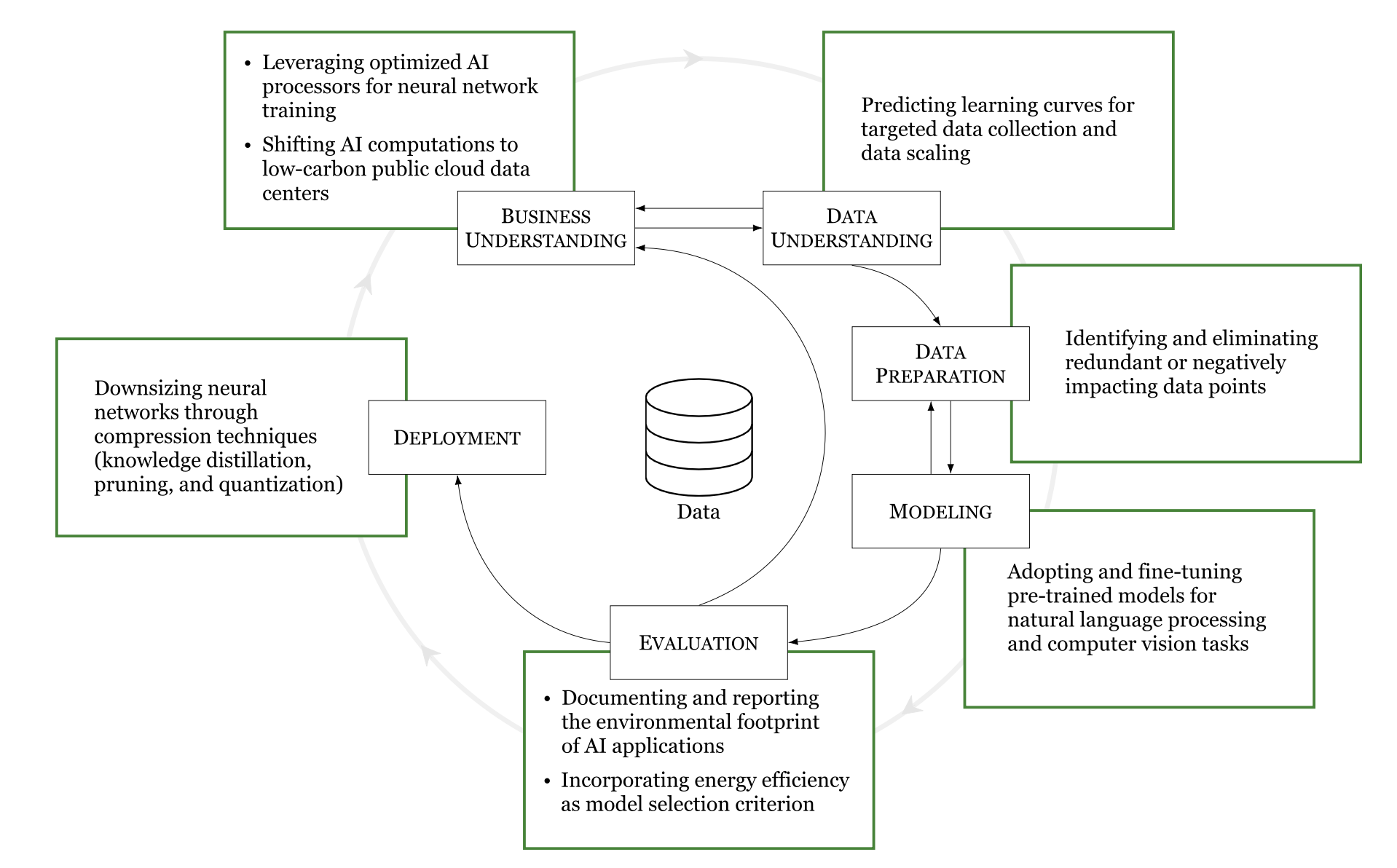Energy-aware AI Development

AI-based solutions show great potential in various fields, including tackling environmental challenges. In light of the great potential, it is often overlooked that advances in performance come at a significant cost to the environment, as training data- and computation-intensive models involves high energy-related emissions. The environmental footprint of AI applications goes beyond the computational costs and includes the resources expended for the production and provision of computing hardware and infrastructure. Climate change, its increasing public awareness, and political regulations are forcing companies to use available resources more efficiently, which for the field of AI means developing accurate models in an energy-aware manner.
The research project investigates approaches suitable to reduce the environmental footprint of AI applications without compromising their model performance. The findings are presented as sustainable extension to the established CRISP-DM model. This provides a holistic overview of possible sustainable strategies along the lifecycle of AI applications, enabling AI developers in industry and research to incorporate and actively influence the environmental costs of their operations.
Publication
Müller K., Kröckel P., Bodendorf F. (2023). Sustainable CRISP-DM Extension for Energy-Aware AI Development. AMCIS 2023, Panama City, 10. August 2023 – 12. August 2023.https://aisel.aisnet.org/amcis2023/sig_green/sig_green/9

